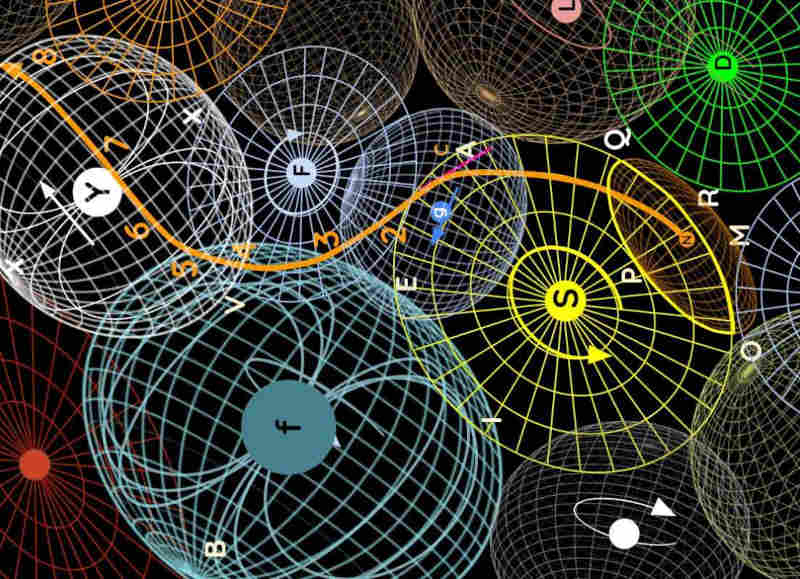Equatorial Plane Versus Ecliptic Plane
Table of Contents
154. Why do the moons around Jupiter move so quickly, while those around Saturn move very slowly or not at all.*
Superphysics Note
This is because:
- Jupiter, like the Sun and Earth, revolves around its own axis
- Saturn, like the Moon and Comets, does not.
- The same face of it always faces the sun.
155. Why are the poles of the Equator and the Ecliptic are far apart?
The axis around which the Earth revolves in the space of a day is not perpendicular to the plane of the Ecliptic, in which it rotates around the Sun over the course of a year.
Instead, it inclines more than 23 degrees from the perpendicular. Hence arises the difference between summer and winter on Earth.
For the annual motion of the Earth in the Ecliptic is principally determined by the agreement of all the air-aether revolving around the Sun, as is evident from the fact that all the Planets agree with it as closely as possible.
But the direction of its axis, around which the diurnal motion occurs, depends more on the parts of the heavens where the fire-aether flows towards it.
We imagine all the space now occupied by the first heaven was once divided into 14 or more vortices.
- Those stars at their centers are now transformed into Planets.
But the axes of all those Planets were not turned towards the same parts because this would not accord with the laws of nature.

But it is very possible that the fire-aether which converged to form the Earth came from nearly the same parts of the firmament that still face its poles.
While many cortices of spots were gradually generated above this star, the virtual photons of this fire-aether formed many channels in these cortices for themselves.
They adapted themselves to their size and shape to offer no passage, or only a difficult one, to the virtual photons that come from other parts of the firmament.
And so those which formed suitable channels for themselves through the Earth, along its axis, when they now still flow through it perpetually, cause its poles to be directed towards the same parts of the heavens from which they come.*
Superphysics Note
156. Why they gradually approach each other
The 2 rotations of the Earth are:
- Revolution around the sun
- Rotation around its axis
These are not parallel. In time, the difference will reduce as the causes that prevent them from being parallel change.
Superphysics Note
157. The final and most general cause of all the inequalities found in the motions of celestial bodies.
The Planets always seek circular motions but never describe perfect circles.
They always deviate somewhat in all ways, both in longitude and latitude.
All bodies in the universe are contiguous and act on each other.
- This is why the motion of each depends on the motions of all the others, and therefore varies in countless ways.